Paralysis Ticks - What you need to know
Author: The Vet Shed Date Posted:28 August 2021
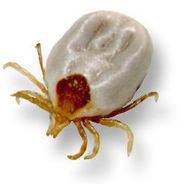
Paralysis Ticks in dogs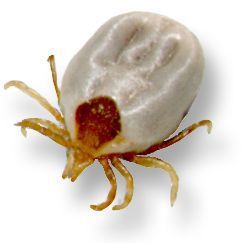
Tick Paralysis is one of the most common preventable causes of death in dogs and cats. Over 10,000 dogs are affected each year. Sadly without treatment nearly 100% will die. Treatment is costly with severe cases costing over $5000. Many Pet insurance companies will not assist with medical costs as it is a preventable disease. The answer is simple, it is essential that all pets in tick areas are protected with a preventative product.
 Tick season is between August and March however tick paralysis cases are often reported outside these times so pets living in tick areas should be on tick prevention year round, especially in the warmer climates.
Tick season is between August and March however tick paralysis cases are often reported outside these times so pets living in tick areas should be on tick prevention year round, especially in the warmer climates.
If you are living or holidaying on the east coast of Australia Tick Paralysis is something you need to worry about. Whether you live in the bush or suburbia you are not safe from ticks. Our Native animals are a host for ticks. Our wildlife are basically not affected by the ticks paralysis so if you have blue tongues, birds, possums, bandicoots, wallabies or kangaroos living nearby, you probably also have ticks about.
We have 4 types of ticks in Australia with the Paralysis tick being the most dangerous.
Identifying the difference between these ticks can be tricky as they will change colour as they feed. A tick does not have to be at full size to cause paralysis
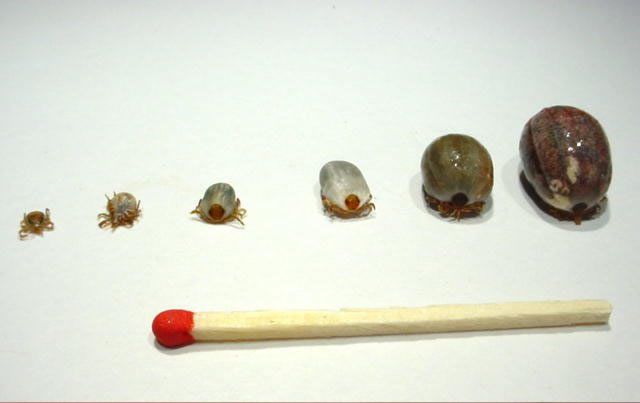
The paralysis tick produces a toxin in its saliva which is passed on to the host animal when the tick feeds.
This toxin affects the dog’s nervous system, leading very quickly to severe impairment or death.
Signs Of Tick Paralysis
Early signs:
• A change in voice; the bark or meow may sound different 
• Weakness in the back legs
• Loss of appetite (this does not happen in all cases)
• Vomiting,
Later signs:
• Wobbliness in the back legs.
• Excessive salivation and vomiting is not uncommon.
• Panting, progressing to loud breathing, even grunting noises
• Many dogs will exhibit a moist cough and breathing problems
Worsening signs:
• As signs of poisoning progress, the animals become unable to stand as forelimbs become affected.
• Difficulty in swallowing which can progress to depression of the gag (pharyngeal) reflex and attempts to clear the throat may produce a characteristic harsh, groaning respiratory sound.
• Regurgitation of oesophageal contents and saliva pooling can lead to aspiration of the fluids into the lungs and pneumonia.
• Breathing becomes exaggerated and difficult.
• As breathing becomes more difficult and laboured, the gums become cold and blue-tinged.
• Coma and death follows quite quickly.
Daily Checking is important
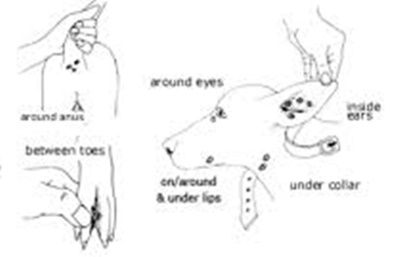 Checking for Paralysis ticks daily is important as no product can guarantee 100% protection. 70% of ticks are found on the front half of the pet A thorough tick search involves working your fingers deep into your dog’s coat to check all parts of their skin, including skin folds and even in their ears. Ticks can be really hard to find and even if you can not find a tick but your pet is presenting any of the above symptoms you must take your pet immediantly to the vet. If you find a tick, don’t stop searching as isn’t uncommon to have 2-3 ticks.
Checking for Paralysis ticks daily is important as no product can guarantee 100% protection. 70% of ticks are found on the front half of the pet A thorough tick search involves working your fingers deep into your dog’s coat to check all parts of their skin, including skin folds and even in their ears. Ticks can be really hard to find and even if you can not find a tick but your pet is presenting any of the above symptoms you must take your pet immediantly to the vet. If you find a tick, don’t stop searching as isn’t uncommon to have 2-3 ticks.
Removal of Ticks
Removal of ticks is best done with a tick twister or the tick tornado, 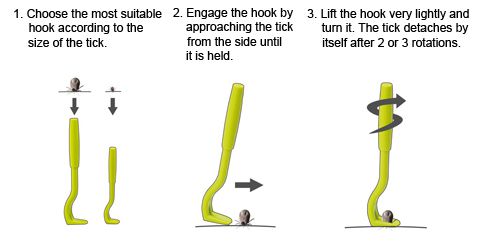 . Do not use irritant substances such as turpentine, kerosene, or petrol. These will kill the tick but won’t make it any easier to remove and will also cause the tick to inject more toxin before dying. Chemicals can also cause a very nasty sore and unnecessary pain at the site of the tick bite. If by any chance the head of the tick stays in the skin do not stress. The head will not inject any more poison once the body has been removed, but it may cause a foreign body reaction similar to a splinter. Once removed, save the tick so you can take it to your veterinaran for identification
. Do not use irritant substances such as turpentine, kerosene, or petrol. These will kill the tick but won’t make it any easier to remove and will also cause the tick to inject more toxin before dying. Chemicals can also cause a very nasty sore and unnecessary pain at the site of the tick bite. If by any chance the head of the tick stays in the skin do not stress. The head will not inject any more poison once the body has been removed, but it may cause a foreign body reaction similar to a splinter. Once removed, save the tick so you can take it to your veterinaran for identification
The Good News is - It is so easy to protect your pet from Paralysis Ticks!
Take a look at our huge range of Tick prevention for dogs and cats here

Credit: Australian Dog Lover









